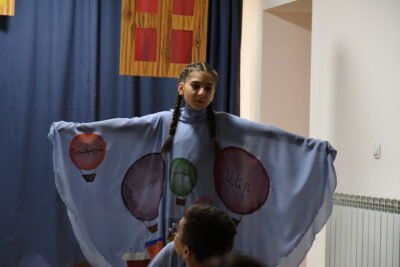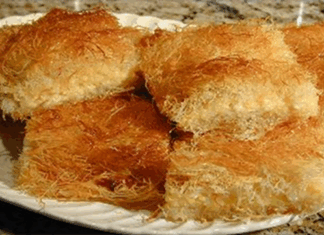Manti or mante is a traditional Armenian dish; the closest Lebanese or Syrian equivalent to manti is shish barak, yet they are definitely not the same. Shish barak are meat-stuffed dumplings cooked in a yogurt-based sauce.
“Manti is a type of dumpling popular in most cuisines of the Central Asia, West Asia, South Caucasus, the Balkans, and Afghanistan. Manti is also popular among Chinese Muslims, and it is consumed throughout post-Soviet countries, where the dish spread from the Central Asian republics. The dumplings typically consist of a spiced meat mixture, usually lamb or ground beef, wrapped in a thin dough sheet which is then boiled or steamed. The size and shape of manti vary significantly depending on geographic location.”*
“According to an Armenian researcher, manti first reached Cilician Armenia as a result of the cultural interaction between Armenians and Mongols during their alliance in or around the 13th century. Migrating Turkic-speaking peoples brought the dumpling with them to Anatolia, where it evolved into the Turkish manti. However, some researchers do not discount the possibility that manti may have originated in the Middle East and spread eastward to China and Korea through the Silk Road.”
Andrew Janjigian, a freelance journalist, recipe developer, and alum of America’s Test Kitchen and Cook’s Illustrated based in Cambridge, Mass., grew up eating manti with his family every Christmas Eve. He says, “Up until a few years ago, eating manti was a Christmas Eve ritual for my extended Armenian family. For weeks before the holiday, the women in the family would gather together on weekends at my Aunt Esther’s house to make the tiny dumplings, which they’d then freeze. Hours and hours (and hours) of work went into making enough manti to feed a few dozen people a meal they’d been looking forward to eating all year long. And then it would be over, and we’d all have to wait another year.”**
“Manti are common to many Central and West Asian cuisines, small parcels of spiced ground lamb or beef surrounded by thin wheat dough wrappers that are typically steamed or boiled. However, Armenian manti, sometimes called ‘sini manti,’ are a little different. The diminutive, canoe-shaped, and open-faced dumpling are baked until crisp instead, and are served in a tomato-infused meat broth, finished with a dollop of yogurt, minced garlic, and a sprinkling of Aleppo pepper and sumac powder. To me, this the ultimate manti, since the combination of flavors and textures is unparalleled: crunchy-crisp dumplings, their corners softened gently by the hot, aromatic broth, paired with the cool, tart yogurt, all of it brightened by lightly spicy, fruity, and tart garnishes,” he adds.

As writer Maggie Schmitt said in 2009, “So for the moment let us put aside whether manti came thundering across the Asian steppes with Genghis and Timur, or landed on Ararat with Noah and family. They were once served in neighboring houses, Turkish, Armenian, and Kurdish, in all the cities and towns of Eastern Anatolia. The same sheets of pasta are rolled out now on both sides of that hostile border, as well as in homes in Aleppo, Beirut, Boston, Los Angeles. They are testimony to a long legacy of cultural entanglements, mirror of a diverse population, and work of a millennium of mothers’ attentions to what is good and fine. Manti, then, for the peacemakers: in hopes that they might be as honest, as flexible and as persistent as this dish.”***








